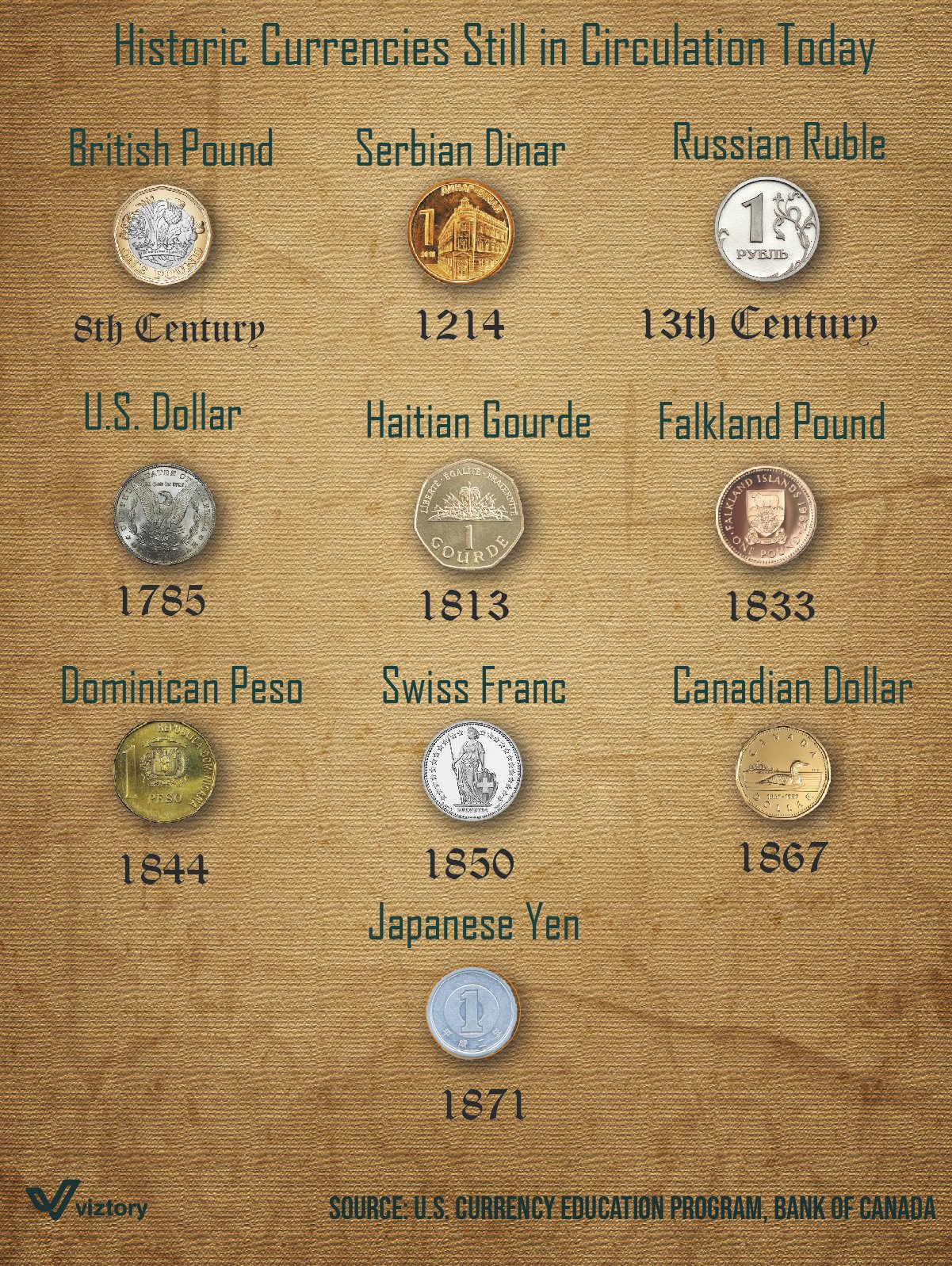Historic Currencies Still in Circulation: A Testament to Monetary Resilience
-
Sep, Sat, 2024
Historic Currencies Still in Circulation: A Testament to Monetary Resilience
Currencies are more than just mediums of exchange; they are symbols of a nation’s history, culture, and economic resilience. The visualizations highlight some of the world’s oldest currencies that have withstood the test of time and remain in circulation today. Among these are currencies such as the British Pound, which dates back to the 8th century, and the Serbian Dinar, introduced in 1214. These enduring currencies are a reflection of long-standing economic systems and their ability to adapt to changing global dynamics.
The persistence of these currencies is closely tied to the stability of the nations that issue them. The British Pound, for example, is the oldest currency still in use and has been a cornerstone of global trade for centuries. Similarly, the U.S. Dollar, first minted in 1785, has become the world’s dominant reserve currency, solidifying its place in international financial markets.
Other currencies like the Russian Ruble, Haitian Gourde, and Swiss Franc also showcase the rich history and economic evolution of their respective countries. These currencies have navigated periods of political upheaval, wars, and economic crises, yet they continue to play an essential role in their nations’ monetary systems.
Money is not just a tool for transactions; it is also a symbol of national identity and economic strength. The long-standing use of these historic currencies demonstrates their importance in both domestic and international markets. Their ability to remain relevant in the modern financial world underscores the durability of well-established monetary systems and their role in facilitating trade, economic growth, and stability.
In conclusion, the visualizations of historic currencies still in circulation highlight the deep connections between money and history. The resilience of these currencies over the centuries reflects the enduring strength of the economies that back them, making them integral components of both national pride and global commerce.

